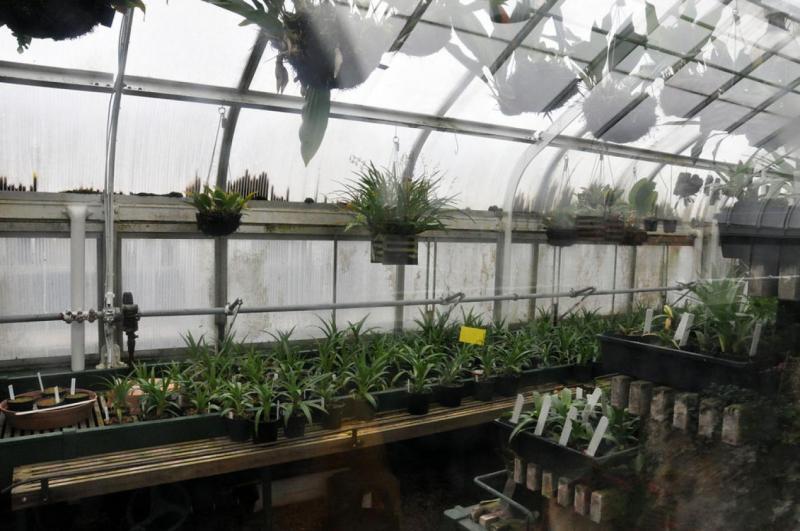Anguloa uniflora
Also known as: The Single or Anguloa uniflora h.v. floribus roseis Anguloa uniflora var. treyeranii in the subfamily: Epidendroideae
Native to: Loreto - Peru Region de Huanuco - Peru
General Information
The Single is a large cool to warm growing epiphytic or terrestrial orchid belonging to the sub family Epidendroideae native to Peru.
Plant Description
Each new growth has numerous elliptic lance shaped leaves that grow to 16-50cm long. Pseudobulbs grow to 3.5-10cm
Flowers
Numerous long lasting blossoms appear during Spring
Blooming Season
- Spring
Substrate(s)
- Coarse
- Bark
- Treefern
- Spaghnum Moss
- Perlite
Care Notes
These orchids like to be kept on the dry side, but may need to be watered daily during warm weather, and prefer a well draining mix or also do well mounted, provided they can be watered regularly.
These are quite a forgiving orchid, there are no special requirements to get this orchid to flower, just good care and consistent conditions. Larger plants may be more fussy and can react poorly to change; a poorly timed repotting, a pest infection or an unusually hot day can set them back for a couple of years. However, even plants that have been treated poorly can thrive, and if they are set back they often recover much stronger then they would otherwise be.
Climate
Grows at low to high elevations. Rainfall ranges from 114mm to 632mm per day, heaviest in May and lightest in December. Humidity ranges from 76% to 81%, highest in July and lowest in February. Temperature ranges from 13C to 27C, highest in February (14C to 27C) and lowest in January (13C to 25C).
Fertiliser
Apply liquid based fertiliser per recommended directions. They can benefit from a high phosphate fertiliser leading up to flowering season, followed by a high nitrogen fertiliser when new growth appears, and a balanced fertiliser in other times. These orchids can also tolerate slow release fertiliser applied 1-2 pellets per cup (250ml) of media.
Use balanced fertiliser during Spring and Summer. Apply fertiliser regularly at half strength year round. Use a high Nitrogen fertiliser during Spring and Summer. Use a high Phosphorous fertiliser during Summer.Potting
These plants can be sensitive to repotting though should not require repotting regularly. Repotting should be done when the mix has broken down to the point that it doesn't absorb water or holds onto water for far too long, usually the plant shows a decline in growth as well.
The mix should be free draining, with a blend of 30% inorganic ingredients such as coarse sand, gravel or perlite, mixed in with about 70% organic ingredients such as peat, leaf litter or decomposed bark. Avoid commercial potting mixes as they can vary wildly and may contain "wetting agents" that can hold onto water for loo long, causing rotting and stunted growth.
Repotting is best done annually.




















